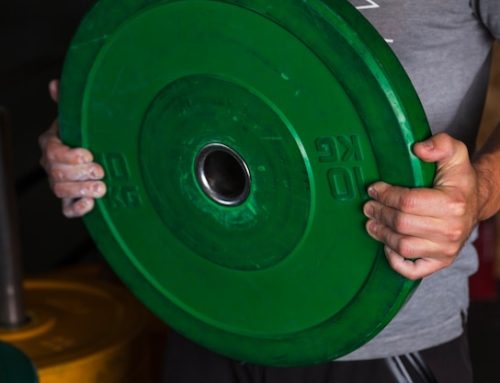The Debate Over High-Rep Weightlifting: Are 20 Reps Too Much?
Weightlifting with high reps is a common training method among bodybuilders, powerlifters, and fitness enthusiasts alike. However, the debate over how many reps is too many has been ongoing for years. While high-rep sets can increase endurance and muscular hypertrophy, some experts argue that performing more than 20 reps per set can be ineffective or even counterproductive.
Understanding High-Rep Weightlifting
High-rep weightlifting involves performing multiple repetitions of an exercise with relatively lighter weights. The goal of this training method is to increase muscular endurance, improve cardiovascular fitness, and promote hypertrophy. High-rep sets typically consist of 15-20 reps or more, with a weight that is 60-70% of your one-rep max.
The Pros of High-Rep Weightlifting
One of the primary advantages of high-rep weightlifting is that it can improve muscular endurance. When you perform sets with 15-20 reps or more, your muscles are exposed to a prolonged period of time under tension, leading to an increase in the number of capillaries, mitochondria, and myoglobin in the muscle fibers. This, in turn, improves endurance and aerobic fitness.
Another benefit of high-rep weightlifting is that it can promote hypertrophy. When you lift lighter weights for high reps, you activate the Type I muscle fibers (slow-twitch fibers) in your muscles. These fibers have a higher capacity for endurance and are more resistant to fatigue. Over time, this can lead to an increase in muscle size and volume.
The Cons of High-Rep Weightlifting
While high-rep weightlifting has its advantages, there are also some drawbacks to this training method. One of the primary concerns is that performing too many reps can lead to a decrease in strength gains. When you lift lighter weights for high reps, you stimulate the Type I muscle fibers, which have a lower potential for strength and power development than Type II muscle fibers (fast-twitch fibers).
Moreover, performing sets with 20 or more reps can also lead to overuse injuries. When you perform high-rep sets, you place a lot of stress on the joints, tendons, and ligaments, which can increase the risk of injury. This is especially true if you perform high-rep sets with poor form or use weights that are too heavy.
The Verdict: Are 20 Reps Too Much?
So, are 20 reps too much? The answer depends on your training goals and fitness level. If you are a bodybuilder looking to develop muscular endurance and hypertrophy, then performing sets with 15-20 reps can be an effective training method. However, if you are a powerlifter or athlete looking to build strength and power, then high-rep weightlifting may not be the best approach.
It’s also important to consider your fitness level and experience with high-rep weightlifting. If you’re new to this training method, it’s best to start with lower reps and gradually increase the number of reps over time. This will allow your muscles, tendons, and ligaments to adapt to the increased stress and reduce the risk of injury.
The Bottom Line
In conclusion, high-rep weightlifting can be an effective training method for improving muscular endurance, aerobic fitness, and hypertrophy. However, performing too many reps can lead to a decrease in strength gains and an increased risk of injury. If you’re considering incorporating high-rep sets into your training program, it’s best to consult with a fitness professional to determine the best approach for your goals and fitness level.






